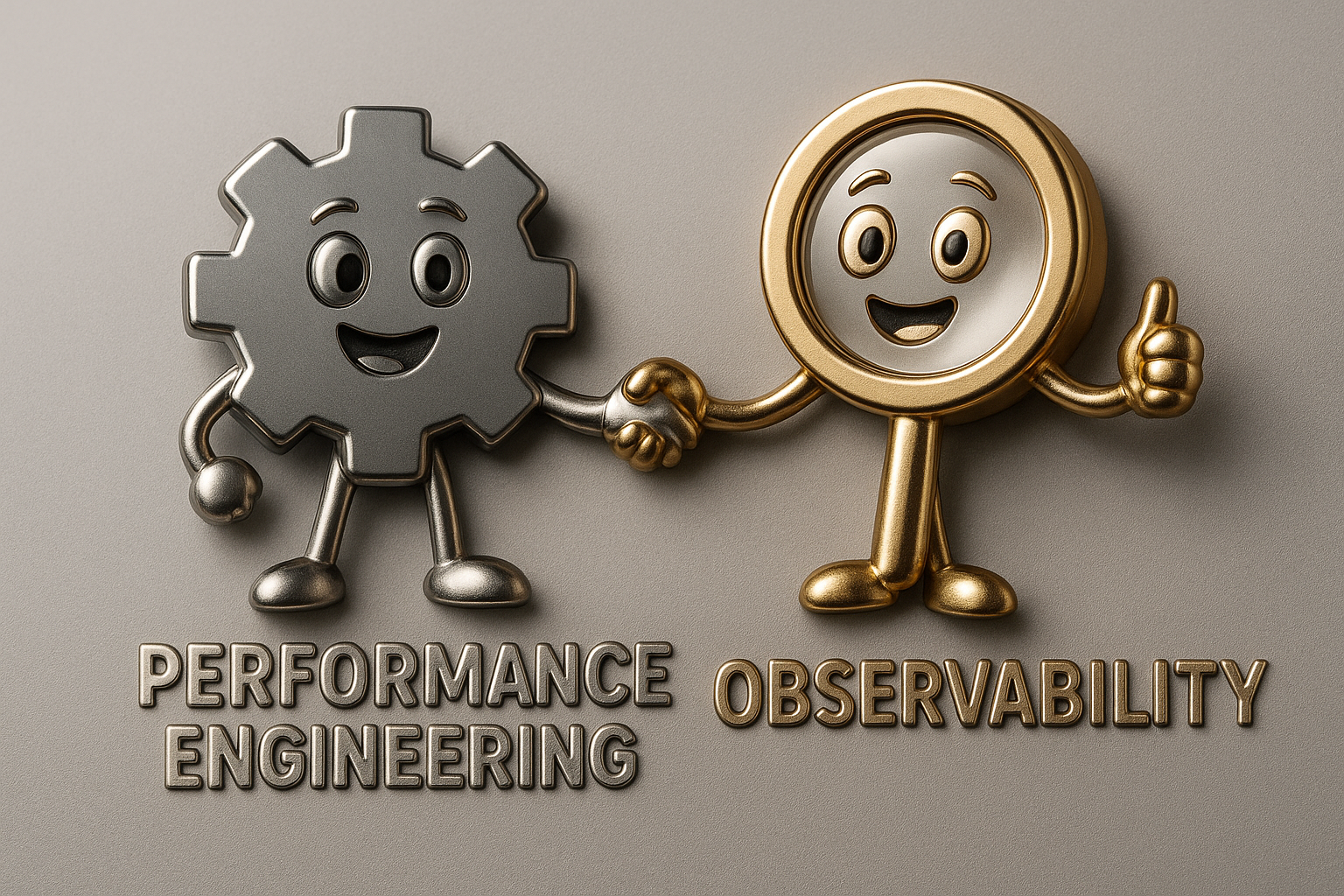Load Testing Gives You Yes/No Answers — Observability Tells You Why

Hey! Are performance engineers still running load tests in environments that lack end-to-end observability?? Are you spending valuable time troubleshooting issues from load test results?
Performance Engineering isn’t going anywhere.
Performance engineering is more than just running load tests. It’s a skilled discipline involving methodical testing, monitoring, correlation, in-depth analysis, performance tuning, and capacity planning. When executed proactively, performance engineering helps to deliver reliable, highly scalable, low-latency applications and, in turn, excellent customer digital experiences.
Observability Brings Clarity.
Performance Engineering and Observability go hand in hand. Performance engineering involves creating realistic workloads, while observability is needed to understand their effects.
Load Testing: Answers Performance Questions
Performance engineers design load scenarios to answer specific goal-oriented questions.
Crafting load scripts is an art and a science. Considerations include:
- Choosing at which level to load test (page or endpoint)
- Creating business logic workflows
- Determining realistic API endpoint payloads
- Emulating persona-type realistic behaviors
- Data management for test variability
- Shaping the load for scalability, stress, longevity, and spike tests
Observability Bridges the Gap Between Load Testing and Root Cause Analysis. Executing a load test provides the “YES/NO” answers for achieving performance goals. Observability tells you WHY those goals were not met.
Observability: Understanding Application Behavior
Observability platforms collect all telemetry data, enabling engineers to see system behavior under load. Key capabilities include:
- Real-time and historical telemetry
- Unified metrics, tracing, and logs across distributed services
- Service maps showing upstream/downstream dependencies
Observability Turns Load Test Data Into Actionable Insights.
Load testing tells you if performance goals are met — observability reveals why they are or aren’t.
Real-life examples include:
Load testing shows if a web business transaction scales to X concurrent requests with a 90% response time of under two seconds — observability reveals bottlenecks and root cause, and more reasons as to why if it doesn’t.
Load testing can confirm whether a Kubernetes cluster can handle X workloads, giving a simple yes or no. Observability, however, reveals when and where the cluster becomes saturated.
The same principle applies to database scaling — increase throughput to the database by raising the maximum threads in the connection pool. Observability shows if the hosting infrastructure can truly keep up.
Monitoring errors during scalability tests reveals when failures occur, while observability pinpoints exactly where these errors are originating plus the exact cause of these errors.
Load testing an API at 300 TPS proves if it meets response time targets — observability differentiates whether code or infrastructure needs tuning.
Load testing confirms that elastic infrastructure can scale under pressure, while observability shows whether it reacts fast enough to preserve a smooth digital experience.
Observability equips Performance Engineering by providing:
- Real-time & historical insights to quickly pinpoint root causes and bottlenecks
- AI-assisted suggestions for faster diagnostics of performance degradations
- Immediate feedback loops to validate performance tuning
Practical Steps to Integrate Performance Engineering with Observability.
- Start Early: Incorporate observability from the application design phase.
- Choose the Right Tools: Use a load tool that fully integrates with your observability stack, such as Locust, to track requests end-to-end.
- Instrument Application Code: Use OpenTelemetry (OTel) for Signals: logging, metrics, and tracing.
- Establish a Feedback Loop: Design Load tests to answer a goal-oriented question. Use Observability to answer “why” to the same questions.
- Foster a Culture of Performance: Use Observability platforms to collaborate across development, operations, and QA to facilitate performance engineering.
Performance Engineering Without Observability Is Dead. RIP.
Performance engineering and observability are now inseparable. Load testing provides measurable results; observability reveals the underlying causes.
Load Test Results Say Yes or No — Observability Shows You Why They Failed. In today’s complex distributed systems, neither practice can succeed without the other.
Skip costly load-testing tools that offer limited insights — use the observability and load-testing stack you need for development and production. Leverage the open-source Locust load testing tool since it can be instrumented using OpenTelemetry. (Stay Tuned — upcoming Blog!)
Sign up for a free Locust Cloud trial and begin building measurable, observable workloads immediately.
Thanks for reading!
Lars Holmberg & Rebecca Clinard • 2025-10-31
Back to all posts